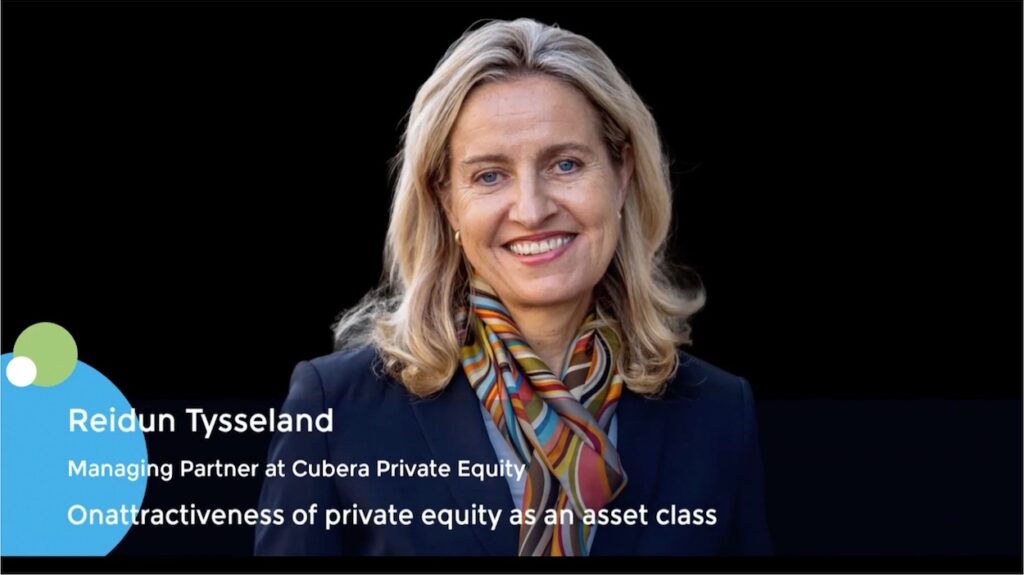Georg Wunderlin, CEO at Schroders Capital, on the evolution of private capital in investors portfolio
In this ION Influencers Fireside Chat, Giovanni Amodeo hosted Georg Wunderlin, CEO of Schroders Capital, for a comprehensive discussion on the transformation of private markets, shifting investor strategies, and the future of private capital allocation.
This fireside chat provided critical insights into how institutional and retail investors should approach private markets in an era of higher-for-longer interest rates, geopolitical uncertainty, and evolving regulatory landscapes. Below, we break down the key themes, strategic takeaways, and emerging opportunities from the conversation.
1. Schroders Capital’s Strategic Focus in Private Markets
Schroders Capital, a leading private markets specialist, operates across four core asset classes, each with a distinct investment approach:
A. Private Equity
-
Focus: Lower mid-market buyouts & venture capital
-
Why? Greater potential for operational value creation vs. large-cap leveraged buyouts.
B. Infrastructure
-
Focus: Energy transition assets (renewables, grid modernization, decarbonization)
-
Why? Structural tailwinds from global decarbonization policies and energy security needs.
C. Real Estate
-
Focus: European thematic opportunities (logistics, hospitality, living sectors)
-
Why? Demand resilience in sectors like warehousing (e-commerce) and affordable housing.
D. Private Credit
-
Focus: Real asset-backed lending (infrastructure debt, real estate debt, insurance-linked securities)
-
Why? Superior collateral control vs. traditional corporate direct lending.
Growth Trajectory:
-
Assets under management (AUM) surged from €35B (2019) to over €100B (2024).
-
Driven by sector specialization, disciplined underwriting, and value-add strategies.
2. The Macro Shift in Private Markets: From Easy Money to Discipline
The Pre-2022 Era: Cheap Debt & Rising Tides
-
Private markets benefited from decades of declining interest rates.
-
Many firms relied on financial engineering (leveraged buyouts) rather than operational improvements.
-
“A rising tide lifted all boats”—even mediocre strategies performed well.
The Post-2022 Reality: Higher Rates & Selectivity
-
Higher-for-longer rates exposed weaknesses in highly levered, low-growth strategies.
-
Geopolitical risks (trade wars, supply chain disruptions) increased capital costs.
-
Investors must now focus on:
-
True alpha generation (not just beta from market trends).
-
Sector specialization (AI, energy transition, healthcare innovation).
-
Downside protection (stronger covenants, asset-backed structures).
-
Key Quote:
“Not every boat will be lifted anymore. You have to create value with your own hands—whether through operational improvements, technological adoption, or strategic repositioning.”
3. Private Credit: Growth, Risks & Where the Real Opportunities Lie
The Rise of Private Credit
-
Banks have retreated from lending due to Basel III/IV capital constraints.
-
Private credit AUM has surpassed $1.5 trillion, with direct lending as the largest segment.
Emerging Risks in Direct Lending
-
Too much capital chasing too few deals → looser underwriting standards.
-
Valuation mismatches in a higher-rate environment.
-
Jamie Dimon’s warning: Some private credit portfolios could face stress in a downturn.
Where Schroders Capital Sees Better Opportunities
-
Asset-Based Finance
-
Loans backed by hard collateral (inventory, receivables, equipment).
-
More secure than unsecured corporate lending.
-
-
Securitized Credit
-
Structured debt (ABS, CLOs) with diversified risk pools.
-
-
Insurance-Linked Securities (ILS)
-
Catastrophe bonds & reinsurance-linked investments.
-
Low correlation with traditional markets.
-
Why This Shift Matters:
“In a slowing economy, you want to be in credit strategies where you control the collateral—so even if the borrower struggles, you can recover your capital.”
4. Why Private Assets Are Essential in Modern Portfolios
The Case for Private Markets Exposure
-
95% of economic value sits outside public markets (vs. ~5% in listed equities).
-
Innovation happens in private companies (AI, biotech, clean energy).
-
Better inflation hedging (real assets like infrastructure & real estate).
Democratization of Private Markets
-
Wealth managers & DC pensions now accessing privates via:
-
Evergreen funds (continuous liquidity).
-
Interval funds (periodic redemptions).
-
ALTAFs (European long-term asset funds).
-
Future Trend:
“The winners will be firms that can offer a seamless continuum between public and private markets—not just specialists in one or the other.”
5. Industry Consolidation & The Future of Asset Management
Coming Shakeout in Private Markets
-
Smaller boutiques will struggle unless they hyper-specialize.
-
M&A will accelerate as larger platforms (like Schroders) absorb niche players.
The Rise of “Code-Sharing” Partnerships
-
Example: Schroders + Phoenix Group (UK pensions) → joint private market solutions.
-
Why? Combines distribution reach with investment expertise.
Prediction:
*”In 5 years, the private markets landscape will be dominated by scaled, multi-asset platforms—not single-strategy boutiques.”*
Final Takeaways for Investors
-
Private markets are no longer optional—they’re critical for capturing growth and diversification.
-
Avoid “crowded” private credit strategies—focus on collateral-backed lending.
-
Prioritize managers with:
-
Sector specialization (not just broad market exposure).
-
Strong value-creation track records (not just leverage-driven returns).
-
-
Watch for consolidation—align with scaled, well-capitalized platforms.
Key timestamps:
00:07 Introduction to the Fireside Chat
02:21 Evolution of Private Markets
04:46 Impact of Interest Rates on Investment Strategies
06:58 The Shift Towards Private Credit
09:42 Regulatory Changes and Market Dynamics
13:47 The Importance of Private Assets in Portfolios
17:16 Emerging Structures in Private Markets
20:25 Navigating the Future of Private Market Investments
22:34 Market Consolidation Trends
23:48 Emerging Collaboration Models
24:41 Strategic Partnerships and Future Opportunities
25:35 Conclusion and Closing Remarks











